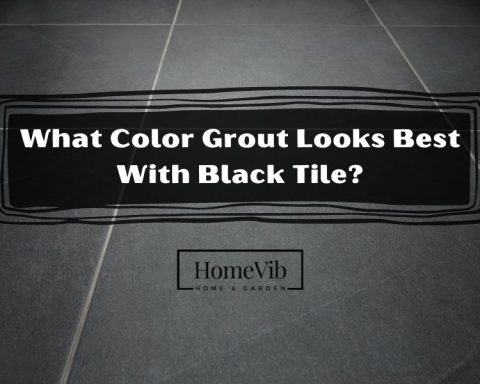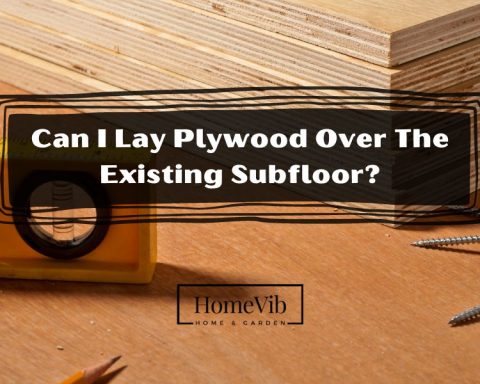There are several factors to consider while choosing alternative bathroom materials.
Those options include Schluter Strips and Bullnose Tiles. Both will help make your bathroom look great, but what do they do differently?
How do they compare in terms of cost, appearance, and maintenance? How do these two products hold up under heavy use by homeowners?
Schluter Strips and Bullnose are different solutions to the same problem. However, these two different materials help fasten the tiles to the wall.
This blog post will look at each and help you decide which is better for your home.
Schluter and Bullnose trim are two types of popular exterior finish materials. They add style and structure to standard details in your renovation projects.
Yet, Schluter looks modern, sleek, easy on the wallet, and more straightforward to install. Meanwhile, bullnose tiles have rounded edges that are perfect for finishing touches.
However, it requires complex installations and costly materials.
Schluter Strip
In 1966, a young master tiler began a new business in Germany. Werner Schlüter established the company known today as Schlüter-Systems.
A year and a half later, he moved the company headquarters to Iserlohn, which is still operating.
Currently, Schluter is a border profile for tiling walls with beautiful patterns. Homeowners use the material to make beautiful floor patterns out of stainless steel.
Schluter is a border profile for tiling walls with beautiful patterns. Homeowners use the material to make beautiful floor patterns out of stainless steel.
Using the profile, one may make ornamental designs in tile fields for walls. At the same time, in stainless steel, one can make decorative designs for flooring.
We’ll go into more detail about the Schluter strip below.
What Is a Schluter Strip?
Schluter is a company that produces profiles for finishing and safeguarding edges. German tile installer Schluter observed that tiles break when near porous materials. So he developed a coating to cover their edges to prevent tiles from chipping.
Tile installations can benefit from using metal Schluter strips. The Schluter strip is typically used to finish off the edge of a tile job.
If you use this strip, you may avoid the hassle of cutting bullnose tile and instead have a clean, square edge. In addition, as a decorative feature inside the tile pattern, they might serve as a border or divider.
Tiles are less likely to break or chip with the help of Schluter Profiles. It is also a method for caulking and seamless transitions between flooring and walls.
Where Do You Use a Schluter Strip?
Schluter is a well-liked choice for many contemporary bathroom renovations. On the other hand, it is also increasingly used in private residences.
You can apply it on the exterior of a backsplash. Meanwhile, you can use it in the corner of a tiled shower niche while changing the flooring.
There are countless other situations. Some of the applications are the following:
- High-traffic, industrial use: Brass and stainless steel
- Business settings: Metals and plastics and aluminum
- In-Home Accommodations: All
- Throughout the Kitchen: The kitchen is an excellent example of a space that might benefit from a trim.
- In the Bathroom: Simple method of completing the look of a wall by trimming tiled shower walls.
- For your Fireplace – This is especially helpful if your fireplace is a divider with an unusual form.
What Is Bullnose?
Bullnose tile, also known as half-round tile, is trim with a half-rounded, completed edge. It is typically used to cover the seam where tiles meet walls.
The bullnose tile has one rounded edge as a standard. But sometimes, you’ll require a bullnose tile with more than one rounded edge.
For a tiled wall’s corners to look finished, you might round off the top and side edges.
Some of the applications for Bullnose are the following:
- Walls: Adding a border of bullnose tiles layout will give your wall a polished appearance.
- Floors: A series of bullnose tiles can complete the aesthetic of a tiled bathroom floor.
- Corners: If your kitchen counter has harsh corners, you can tile over them with bullnose tiles.
- Charming trim: A decorative accent at the top of a half-tiled wall or around a window or door.
Differences Between Schluter And Bullnose
After establishing their functionality, we may compare their construction and design options. At the same time, let us determine their price, installation, and longevity.
Structure
Schluter is the best option for razor-thin edges. As you can see, their fixtures fit the borders perfectly. It is a corner trim for exterior tile and aluminum profile. In addition, it consists of metal or plastic materials.
Meanwhile, the corners of a bullnose tile are round, making them easy to identify. These also consist of tile property materials. You’ll find a bullnose towards the tail end of a run, which can be long, rectangular ceramic tiles.
Tiles with two rounded edges, like those seen on a bullnose, are ideal for use as a finishing touch. Meanwhile, for a modern appearance, choose Schluter Strips. It aims to achieve a country aesthetic look.
Design Options
Schluter is aesthetically pleasing and reasonably practical in terms of design. It can accommodate all expansion, perimeter, edge, and transition joints. At the same time, you can apply it to finish off walls and floors, stair nosings, and more.
For example, Schluter is a good alternative when a tile’s matching edge is challenging to pair.
However, Bullnose tiles are available in various shapes and colors.
- Rectangular Bull Nose Tile
- Square Bullnose Tile
- Corner Bullnose Tile
Bullnoses are more resistant to damage from impacts thanks to their round design.
Price
Schluter trim is often less expensive and simpler to install compared to Bullnose.
Price per square foot to install and use Schluter strips as tile underlayment is $3.50 to $4.75. Remember that its slim profile is an asset when extra height is not desired.
Meanwhile, the standard sizes for Bullnose are 4×4 inches or 6×6 inches. It costs $9 to $11 extra per linear foot, but it’s worth it because it gives your house a luxurious look and feels.
Installation
All you need to install Schluter trim are standard tools such as a hacksaw, T-square, and hammer. To avoid gaps, your tile’s thickness should equal that of the trim you use.
On the other hand, installing a bullnose is a time-consuming process. So if you’re not confident in your abilities, you should get expert advice.
In addition, it can be more costly because of its complexity and the additional grouting.
Overall, Schluter has a modern, sleek look and is cheaper and easier to install than bullnose trim.
Longevity
When it comes to Schluter Strips, durability, and longevity are essential. Therefore the materials offer waterproofing features that can last for almost a lifetime.
So if you use Schluter Strips, they should survive for at least 50 years.
Meanwhile, bullnoses have characteristics to withstand high impact and premature tire degradation.
Typically it can last more than 50 years due to the durability of porcelain tile.
Generally, both materials last for quite some time, which is a big plus for homeowners.
Does Schluter Strip Rust?
Schluter Strip won’t rust. However, it may retain stains over time.
In addition to aluminum, Schluter profiles are also available in brass. At the same time, it is also accessible with stainless steel and plastic.
As you can see, Schluter Strip is more long-lasting and suitable for busy public spaces. Thus, aluminum is great for damp areas because it won’t rust.
On the other hand, metal tile strips are great for high-moisture areas like kitchens. This is because they will not corrode from harsh cleaning.
Is It Better To Use Schluter Or Bullnose?
Considering all the facts, both products seem equal.
However, Schluter wins in terms of aesthetics and price. At the same time, Bullnose has the edge regarding longevity and practicality.
While both trim styles are attractive, Schluter is a better option for your home since it is less expensive, easier to install, and aesthetically pleasing.
Simply put, Schluter trim is an excellent way to upgrade your home’s look without effort. In addition, the material is durable and requires little maintenance for many years.
Therefore, you can use it long-term or replace it entirely if you need to be more budget-friendly.
FAQ
How Do You Attach a Schluter Strip To a Wall?
In attaching a Schluter Strip to a wall, (Step 1), you must first imbed into a thin-set and press into the substrate.
Step 2: Next, you’ll place the tile over the trim’s “anchoring leg” and set it in a thin set.
Step 3: To prevent any shifting, embed it in the thin set when used on a floor.
Step 4: Once you’ve determined where the trim has to go, you may attach it to the wall and cover it with a thin set.
Step 5: To adhere the tiles to the wall, use a thin set between them and push it through the holes in the profile.
Step 6: Use some tape or a drop of hot glue to secure it.
How Do You Install a Schluter Transition Strip?
Select the profile according to the tile to install a Schluter transition strip (Step 1). This should match the thickness and format.
Step 2: Then, use a notched trowel to apply thin-set mortar to the profile area.
Step 3: Align and press the profile’s perforated anchoring leg into the mortar. Then apply more thin-set mortar over the perforated anchoring leg.
Step 5: Solidly insert the tiles so the tiled surface is flush with the top of the profile.
Step 6: Set the tile to the inbuilt joint spacer for uniform measurement.
Step 7: Cover the joint with grout or setting substance. Then clean the profile’s visible surface of residue.
How Do You Trim a Bullnose Corner?
To trim a bullnose corner (Step 1), mark your baseboard cuts. Make marks on the wall where you want to install your outside boards.
Step 2: Using a miter saw, create a centerpiece (the interior of a 90-degree corner should measure between 5/8″ and 3/4″).
Step 3: The two outer cuts will measure 22.5 degrees, and you should leave your markings intact.
Step 4: Use your boards to create an inside cut at a 22.5-degree angle for the side pieces. Make sure to leave your marks on the outside.
Step 5: After cutting at intervals of 22.5 degrees, you’ll have three distinct pieces. Each with a 90-degree angle.
Does Bullnose Have To Match Tile?
Yes, you can use Bullnose, the same color as your tile.
However, try switching to a different hue to give your room extra flair.
You can also use a different material, such as a marble pencil or chair rail. At the same time, you can apply a thick glass tile if you’re unhappy with the bullnose coordinates.
Glass, metal, ceramic, and natural stone are just a few materials that create a bullnose edging. Installing one of these unique tiles is a great way to project flair and personality into your home.









